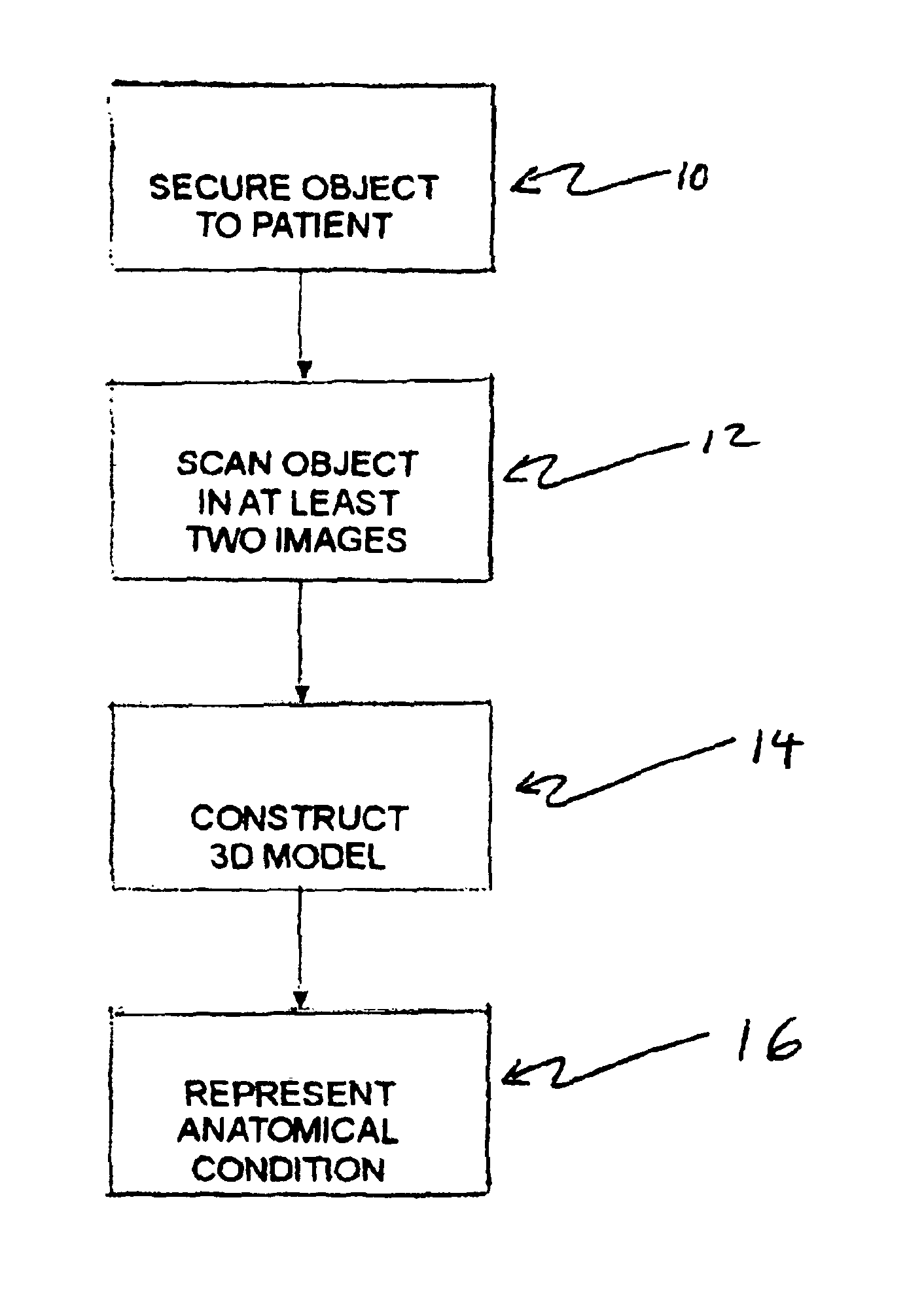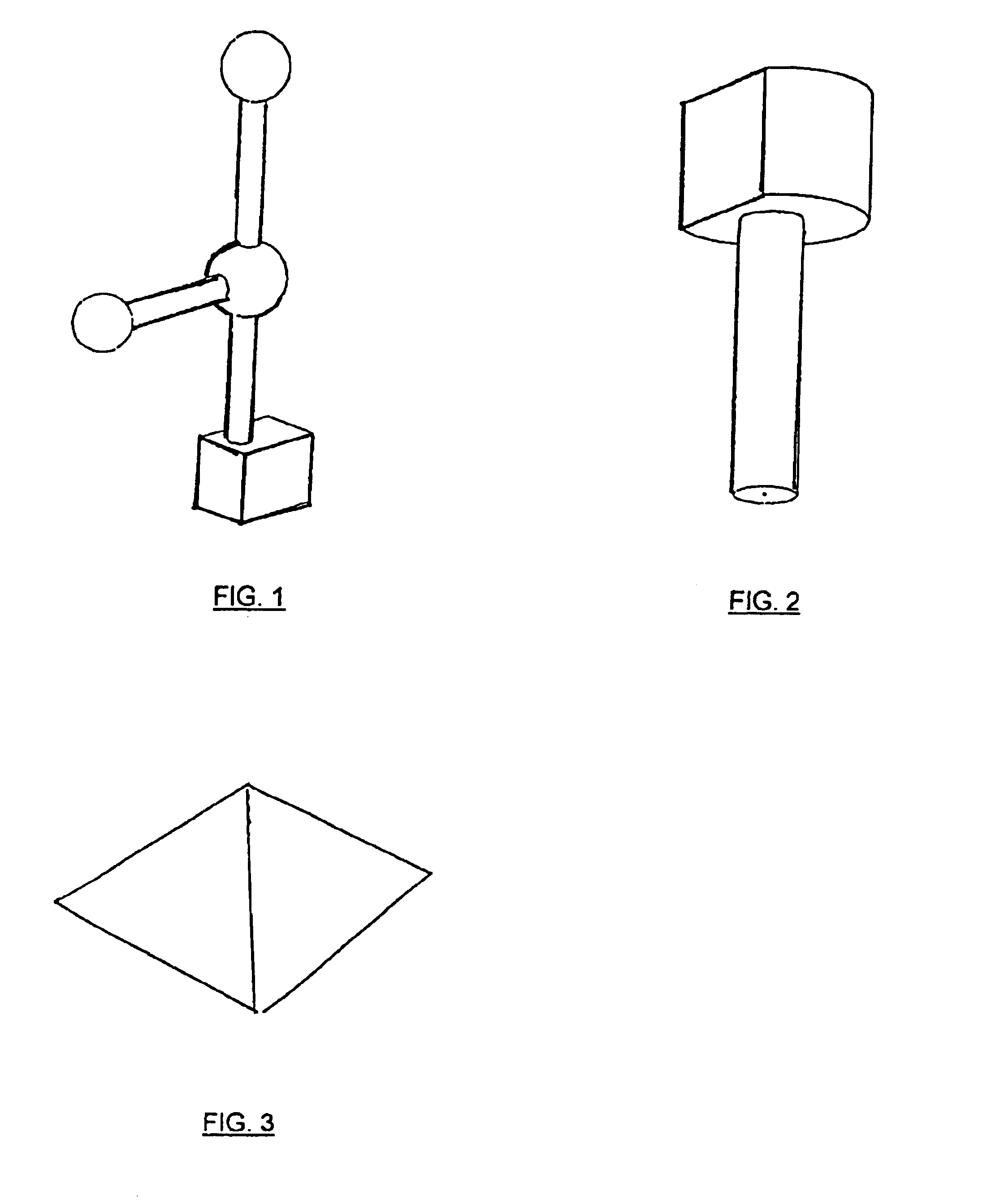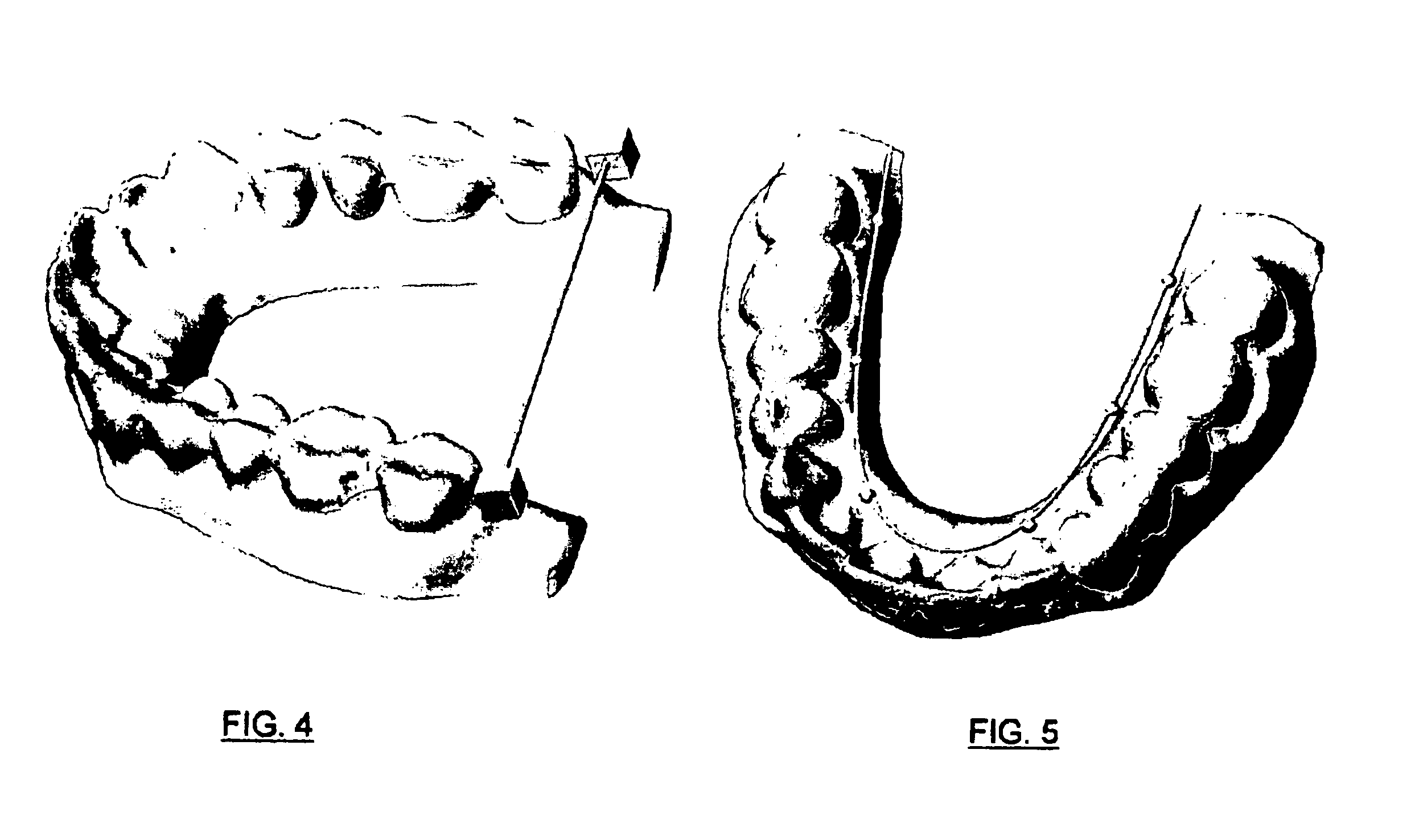Method and system for three-dimensional modeling of object fields
a three-dimensional modeling and object field technology, applied in the field of three-dimensional modeling of object fields, can solve the problems of inability of dental practitioners inability to make dental impressions, and inability to achieve the effect of combining (or “stitching”) adjoining parts accurately and low image definition
- Summary
- Abstract
- Description
- Claims
- Application Information
AI Technical Summary
Benefits of technology
Problems solved by technology
Method used
Image
Examples
Embodiment Construction
[0018]The present invention is a method and system for creating virtual three-dimensional models of a scanned field of view, using three-dimensional recognition objects as reference points in the “stitching” of overlapping captured images, and, additionally, positioning such recognition objects in areas of the field of view that are characterized by low feature definition in order to enhance the accuracy of the three-dimensional modeling of such areas.
[0019]The invention is particularly suitable and intended for medical and dental applications, and it is particularly suited for use in the field of implant dentistry and related applications. Dental implants are used to support the restoration of missing teeth. Implant fixtures are surgically implanted by a dentist. These dental implants typically will be “restored” with abutments and crowns; that is, following successful implantation of implant fixtures into the jaw of the patient, complementary components including abutments and cro...
PUM
 Login to View More
Login to View More Abstract
Description
Claims
Application Information
 Login to View More
Login to View More - R&D
- Intellectual Property
- Life Sciences
- Materials
- Tech Scout
- Unparalleled Data Quality
- Higher Quality Content
- 60% Fewer Hallucinations
Browse by: Latest US Patents, China's latest patents, Technical Efficacy Thesaurus, Application Domain, Technology Topic, Popular Technical Reports.
© 2025 PatSnap. All rights reserved.Legal|Privacy policy|Modern Slavery Act Transparency Statement|Sitemap|About US| Contact US: help@patsnap.com



